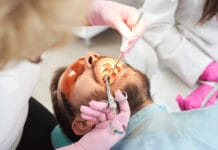There are over 153 million orphans around the world, according to the United Nations Children’s Emergency Fund (UNICEF). An estimated 5,700 children become orphans every day and end up in foster care until they find a suitable family to live with and take care of them. Many of the children are surrendered due to neglect, abuse, or poverty. One or both of their parents are more likely to be underage, unemployed, and struggling with addiction issues. As a result, many of them have unique healthcare needs due to their unstable living conditions.
The Journal of the American Dental Association recently published a paper that examined the long-term dental needs among this vulnerable population. The study compared the oral health needs of children who’d lived in foster care with their peers.
About the United States Foster Care System
Almost half a million children are in the United States foster care system based on data compiled by the American Society for the Positive Care of Children. Roughly 100,000 youth are eligible for adoption from that group, although the average wait time is seven years before they can be placed with a family.
Foster children usually experience a ripple effect of mental and behavioral issues due to growing up in an unstable home environment. They may face academic challenges, have trouble fitting in with their peers, or regulating their emotions. Foster youth are also twice as likely to be diagnosed with serious mental health issues like Post-Traumatic Stress Disorder (PTSD) than people who served in the military due to being separated from their parents or extended family. Compared to 87 percent of their peers, only 58 percent of foster youth graduate high school by the time they are 19 years old. Roughly 30,000 young adults age out of the foster care system every year and are at risk of becoming incarcerated or homeless within two years due to a lack of financial resources and support from others.
About the Study
A team of professors decided to investigate the unique oral health needs of children in the foster care system. The population-based study compared the self-identified oral health care needs and access to dental care among the youth who were in foster care with their peers. Dr. Elise W. Sarvas, a clinical associate professor in Pediatric Dentistry at the Department of Developmental and Surgical Sciences at the University of Minnesota, led the research.
They decided to gather the results from a 2019 statewide survey of 169,484 public school students living in Minnesota who self-reported the condition of their oral health. The students ranged from 5th, 8th, 9th, and 11th graders. Roughly 3% of the youth who participated in the survey had a history of foster care.
Based on the results, Dr. Sarvas discovered that children who had a history of foster care reported a higher rate of oral health problems than their peers. She also noticed they had less access to oral health care and couldn’t afford to see a dentist. After using logistic regression to control for certain variants, Dr. Sarvas calculated that foster care youth were 1.54 times more likely to have noticeable dental problems than their peers.
In Conclusion
Dr. Sarvas believes more scientists and dental professionals should conduct future studies to have a better understanding of the oral health care needs of vulnerable populations like foster care kids. Dental clinicians who work with young children should learn about their history and carefully assess their dental needs if they find out the patient spent time in a foster care system or orphanage. Dental professionals can recognize their oral health concerns earlier and significantly improve their oral health with the proper precautions.











